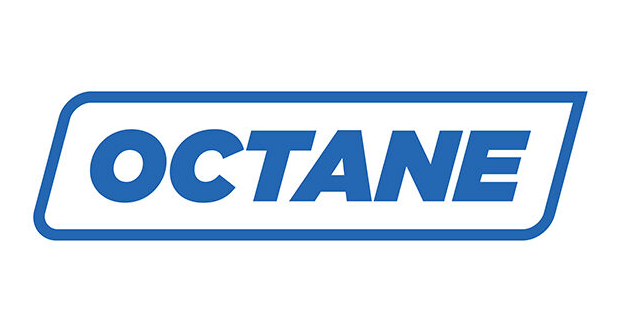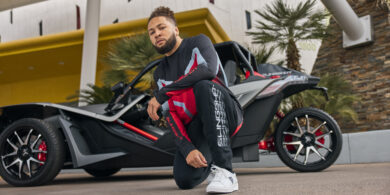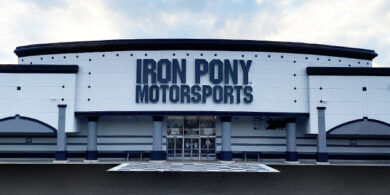June 13, 2011 – A new helmet contender
For the first time since J.D. Power and Associates began its U.S. Motorcycle Helmet Satisfaction Study, Arai has to share the top spot with another helmet company, Icon.
Arai has not been dethroned from its 13-year top ranking, however. Both companies scored 852 points out of 1,000 on the survey, a survey high for points. Arai improved its score by 16 points over 2010, while Icon jumped 26 points. Icon’s previous highest ranking was third, which it achieved in 2009 and 2010.
“Honestly, I was hoping for second place this year because we were so close behind Shoei last year,” Icon design director Kurt Walter said.
Hitting the top of the rankings was a “pleasant surprise” and exciting for Icon staff.
“It definitely is a nice way for us internally as a company to know how we’re doing with the customers, with the large customer base out there. It’s kind of a nice reward for us to see this kind of result,” Walter said.
Arai was also glad to see it improved on its scores again.
“While it is always nice to be recognized for your efforts, especially when that recognition comes from your customers, having had our customers put Arai at the top of the survey every year since the beginning of the survey is what motivates us to build better helmets for our customers,” said Brian Weston, director of operations for Arai Helmet Americas Inc. “However, we do not focus on winning surveys, we focus on building better helmets, and customer feedback confirms it.”
Nine helmet brands were rated on 11 attributes: quietness, ventilation/air flow, de-fogging performance, face shield effectiveness of keeping wind out, face shield resistance to scratching, ease of replacing face shield, scratch resistance of shell, color/graphic design, weight, ease of fastening the strap and fit and comfort.
Arai scored well across all 11 areas, with fit and comfort and face shield effectiveness of keeping wind out as its top categories. Comfort, quality and confidence in the brand is what customers like about Arai helmets, Weston said.
“Perhaps some do not realize it, but that family pride and focus on making better helmets is what makes Arai so unique in the helmet industry,” he added.
Icon performed best in the color/graphic design category, an attribute in which the company prides itself.
“The primary thing people like about our helmets is the styling, the design of the shell and the graphics. That’s really what we’ve been known for,” Walter reported. “Our graphics are just more elaborate than anyone else’s. What keeps them coming back is just the overall quality and fit of the helmets are really nice.”
Shoei came in third in the survey with a score of 831, while Harley-Davidson and Scorpion each scored 800 points. This year’s industry average was 788, the highest since the study’s inception in 1999. The study was compiled from a survey of 4,820 purchasers of new 2009-10 model-year motorcycles. It was completed between August and October of 2010.
The most commonly purchased helmets were full-faced models, which were sold to more than half of respondents, according to exclusive survey data provided to Powersports Business. Half helmets followed with 20 percent of the total, followed by convertible and open-face helmets. Less than 1 percent of poll-takers purchased off-road helmets.
Though most helmets were purchased at a dealership, the Internet is climbing in sales. This year 23 percent of respondents said they purchased their helmets online, while 20 percent said the same last year. In 2002, that number was only 4 percent.
The price paid by customers has changed little over the past few years. This year the average was $209, up $3 from last year. In 2007, the average price was $203. Despite this, the top two brands each have helmets that top that average.
Walter says Icon customers are willing to spend under $200 to more than $400 on Icon helmets because of the artistic elements and the craftsmanship.
“I think that people are will to step up — the average customer is willing to step up — and spend a little bit more on an Icon helmet,” he said.
Weston said many people appreciate Arai’s quality and durability, so they’ll stick to the more expensive brand.
“We’ve often had people tell us to make Arai’s [helmets] cheaper,” he said. “My question to them is what part of an Arai are you willing to give up? Comfort? Shield clarity or sealing? Ventilation? Light weight? Excellent field of view? Balance or low center of gravity? Innovations that have been pioneered by Arai over the past six decades come at a cost.
“Implementing those innovations, with premium materials so as to enhance their effectiveness, comes at a cost. Paying highly trained workers to focus and be active participants in building better helmets comes at a cost.”
The study also found that the median age of helmet owners continues its increase that began in 2000, hitting 48 years old this year. Customers were also satisfied with their helmets overall, with 82 percent reporting they probably or definitely will repurchase the same brand.
Though Arai has spent 13 years at the top of the survey, the company does not focus too much on the results.
“While scores are nice, we do not consider them a goal,” Weston said. “We simply try to make better helmets, and if we are successful in doing that, the high scores and top rankings will follow. Such scores validate what we do publicly, but we validate what we do internally every day by producing the very best helmet we can.”
Icon, a 10-year-old company, plans to continue improving its helmets and therefore improving its satisfaction score. When the company first entered the list, it started in the middle and has seen steady improvement since. The push to keep moving up has not stopped.
“The goal is obviously to be No. 1 by ourselves and not share that title with Arai,” Walter said. “I have great respect for Arai, but for sure to try to improve on that is every person’s goal in the office.”




